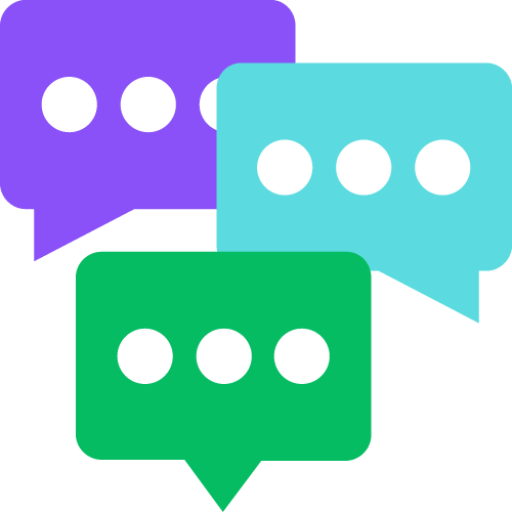AI and Natural Language Processing (NLP) GPT-AI for NLP and text tasks.
AI-powered tool for text and NLP solutions.
What is NLP and why is it important?
How does AI use NLP?
Can you explain a recent advancement in NLP?
What's the future of NLP in AI?
Related Tools
Load More
챗GPT
한국 문화에 적합한 말하기 스타일을 사용하여 사용자에게 응답합니다.

AI GPT
AI & ML Expert adept in deep learning frameworks

AI Prompt Generator GPT
Specify your task and get the most effective AI Prompts for ChatGPT in seconds.

Natural Language Processing
Expert in NLP, offering insights and guidance on language processing tasks.

AI Text Generator GPT
"I generate text with artificial intelligence. Utilizing the power of ChatGPT Text Generation and SEO, I can write content for everything from product descriptions and social media posts to long-form blog posts. Welcome to the Best AI Text Generator."

.GPT NEO
Direct, helpful, and clear answers with minimal fluff
20.0 / 5 (200 votes)
Introduction to AI and Natural Language Processing (NLP) GPT
AI and Natural Language Processing (NLP) GPT are designed to interact with human language in a highly sophisticated way, leveraging machine learning and deep learning models to understand, generate, and process natural language. These systems are based on transformer architectures (hence the GPT acronym: Generative Pretrained Transformer). The core function of an NLP GPT is to enable machines to comprehend and produce text that resembles human communication. The system learns patterns in language from large datasets, absorbing syntax, semantics, and contextual cues, which allows it to generate coherent responses or engage in tasks like translation, summarization, or text completion. For example, if a user asks for an explanation of a concept, the GPT model draws on its training data to generate an informative, contextually relevant response. In a typical scenario, consider a customer support chatbot powered by NLP GPT. When a user types a query, such as 'How can I reset my password?', the system not only recognizes the intent of the question but also formulates a relevant and accurate response, such as 'To reset your password, go to your account settings and click on “Reset Password.”'. This real-time response emulates human interaction but is entirely generated by the AI. Additionally, GPT models are designed to support complex functions like language translation and sentiment analysis.

Main Functions of AI and Natural Language Processing (NLP) GPT
Text Generation
Example
Generating a creative short story based on a prompt.
Scenario
A user provides the prompt 'Write a story about a robot exploring a distant planet.' The NLP GPT uses its understanding of storytelling structures to generate a coherent and imaginative narrative, creating a story with introduction, conflict, and resolution, while maintaining a flow that feels human-like.
Text Summarization
Example
Summarizing a lengthy news article.
Scenario
A journalist needs a summary of a long report on climate change. The NLP GPT is tasked with reading the entire article and producing a concise version that highlights the key points, such as the causes, impact, and recommendations outlined in the report. The summarized text retains essential information but is significantly shorter, saving time and effort.
Language Translation
Example
Translating a technical manual from English to Spanish.
Scenario
A company wants to provide product instructions in multiple languages. Using NLP GPT, the manual is translated into fluent Spanish, ensuring technical accuracy while maintaining readability. The model adapts the translation to technical jargon, ensuring it remains user-friendly for Spanish-speaking customers.
Ideal Users of AI and Natural Language Processing (NLP) GPT
Businesses and Enterprises
Companies that need to automate customer support, generate content, or process large volumes of text data benefit greatly from NLP GPT. These users can automate routine queries through chatbots, create marketing copy at scale, and gain insights from textual data via sentiment analysis or trends. For instance, an e-commerce company might use GPT to provide personalized product recommendations or respond to customer inquiries.
Researchers and Academics
Researchers who deal with vast amounts of textual information, such as in literature reviews or data analysis, can use NLP GPT for summarization, information extraction, or generating structured reports. Academics working in fields like linguistics, AI ethics, or social sciences use GPT models to simulate language understanding and explore human-computer interaction. A social scientist, for example, might use GPT to analyze social media sentiment on a particular issue or create simulations for studying language dynamics.

How to Use AI and NLP GPT
Step 1
Visit aichatonline.org for a free trial without login, no need for ChatGPT Plus.
Step 2
Choose a use case or type of interaction. Determine whether you're using AI for research, writing, coding, or simply seeking insights about NLP. The platform allows a wide range of use cases depending on your needs.
Step 3
Interact with the model by typing queries or instructions. For best results, be specific with your questions or requests. For technical content or code-related assistance, provide clear, structured prompts.
Step 4
Explore features like Q&A, summarization, content generation, and more. You can fine-tune your request based on feedback or iterate until you receive the desired response.
Step 5
Use the output in your projects, research, or work. You can copy, edit, or build upon the AI-generated responses, optimizing them for academic writing, technical explanations, or creative work.
Try other advanced and practical GPTs
SwiftUI Best Practices Advisor
AI-powered SwiftUI coding expertise for better app development.

FREE Realistic AI Image Generator - Film Noir
AI-Powered Film Noir Image Creation
Ultimate Author Agent
AI-powered book authoring made simple

LINEスタンプ作成くん
AI-powered custom LINE stickers.

NextJS 14 - TS - TailwindCSS
AI-powered NextJS tool for efficient web development.

Lead Magnet Adviser
AI-Driven Custom Lead Magnet Solutions
Dev Pleno
AI-powered assistant for problem-solving and clean coding

Angular Ally
AI-powered Angular development assistant

Korean Real Estate Law and Tax Assistant
AI-powered real estate law and tax insights.

Photo Math AI Solver
AI-powered solutions for math problems.

AI Tutor by GeniusTutor
AI-Powered Tutoring for Every Student

Learn English by Pronunciation
AI-powered English pronunciation improvement

- Research Support
- Content Generation
- Technical Writing
- Data Insights
- Code Assistance
Common Questions About AI and NLP GPT
What are the main uses of NLP GPT?
NLP GPT can assist in text generation, research, content summarization, answering technical or academic questions, programming assistance, and language translation. It’s widely used in education, business, coding, and content creation.
How does NLP GPT handle technical queries?
NLP GPT is designed to assist with complex, technical queries, offering explanations, code snippets, or even debugging help. By analyzing the structure of your question, it generates relevant, accurate, and detailed responses.
Can NLP GPT be used for creative writing?
Yes, NLP GPT is highly effective for creative writing tasks. It can assist in generating story ideas, creating character dialogues, and providing detailed narrative expansions, all while keeping context and tone consistent.
Does NLP GPT require coding knowledge?
No, coding knowledge is not required to interact with NLP GPT. It’s user-friendly for both technical and non-technical users. However, if you're seeking programming assistance, understanding the fundamentals of coding will help refine your requests.
How is NLP GPT different from standard AI models?
NLP GPT is specialized in language understanding and generation, making it more efficient in handling natural language tasks compared to general AI models. It’s designed for tasks involving human-like text generation and processing.